
By SF Concatenation’s Jonathan Cowie: Science lectures are coming back! There have been physical SF conventions since CoVID lockdown and, of course a boom in the new digital online SF gatherings. Physical body science lectures are coming back too. Prior to CoVID, I used to go to several science lectures and three or four one- or two-day symposia a year: something solid once a month or so. All that stopped early in 2020 with CoVID lockdown and while things began to open up in 2021 with the vaccine rollout, in person science symposia and lectures – at least those associated with my usual haunts – are only just opening up. (Sorry, virtual symposia and events just don’t do it for me: for one thing no real networking and discussion opportunities.) For myself, one recent bit of good news was that the Geological Society has now resumed its public lectures and last week I was pleased to attend one by Natasha Stephen on Extra-terrestrial Fieldwork; the adventures of an Earth-bound Astronaut: a topic that is genre adjacent.
I went with a former Institute of Biology work colleague, her partner an amateur astronomer and fellow science fiction fan, Tony Bailey (who incidentally does SF2 Concatenation’s stationery).
This lecture looked at geologists who hunt for meteorites from the Moon, Mars and asteroids and how they track them back to their likely point of origin.
Apparently, there are now world-wide 71,633 scientifically classified meteorites (excluding those on folks’ mantelpieces unclassified). Over 95% of classified meteorites are finds and the rest are tracked down from an observed fall. One of the best ways to find meteorites is to go to a desert as the meteorites will stick out in the landscape. Having said that deserts contain creatures such as camels or kangaroos (depending on which desert) and it is surprising how many suspected meteorites initially spotted soon turn out to be just animal poo. (A problem not to be sniffed at.)
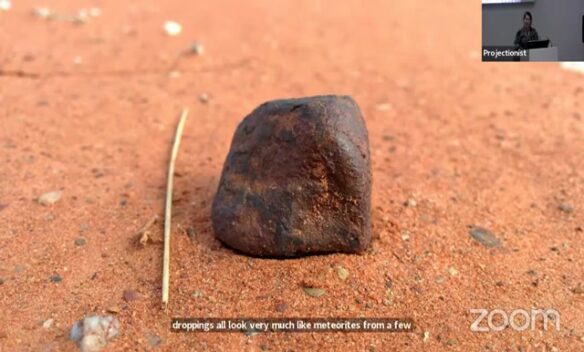
Nonetheless, such expeditions can be fruitful. Natasha Stephen’s last meteorite hunting field trip, in 2019 just before CoVID hit, turned up 46 meteorites in 8 days.

Having got your meteorite, it then needs to be microscopically and chemically examined as to determine its exact mineral content. Lumps of rock may seem to be one type of mineral but usually contain microscopic pockets or crystals of other mineral within them. This provides geologists with a sort of mineral fingerprint for the meteorite. We are now directly survey Mars both with landers and using orbital remote sensing. The Moon and a number of asteroids have also been remote-sense surveyed.
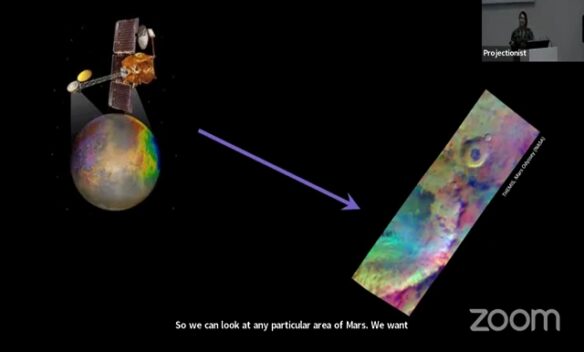

What the geologists do is look at the mineral crystals within the meteorite and then look at where these combinations of minerals occur on Mars, the Moon and asteroids. Even though there is a huge difference in scale – Mars remote sensing looks at areas hundreds of metres across whereas crystals in micrometorites are sub-millimetre – these locations are then the likely source of the meteorite. Even meteorites which are solid metal (a rare type of meteorite) have a crystal fingerprint depending on how long they took to form in zero-(micro)-gravity. These likely came from the molten cores of larger asteroids (originally tens of miles across) that then were broken up in collisions with other asteroids revealing the core. Again, they have an almost unique fingerprint.
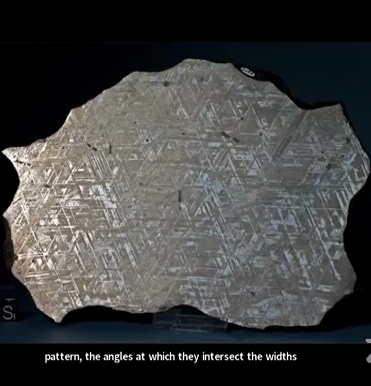
As Natasha explained, she finds meteorite hunting and the subsequent analysis fascinating. Apparently, even the Apollo 11 astronauts were intrigued when they visited the Smithsonian’s collection of Moon rock meteorites (see picture).
Insert apollo-11-astronauts-wowed.jpg
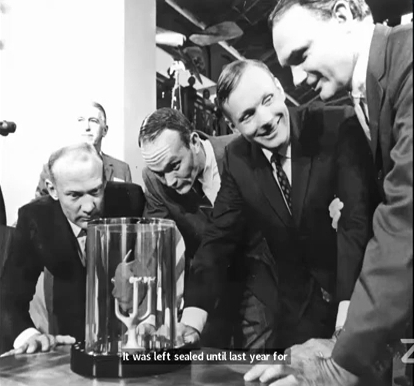
And one advantage of an in-person lecture was being able to see actual meteorites close up, and even hold a meteorite that originated from the Moon.
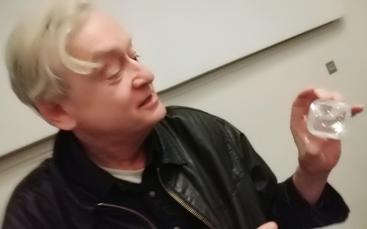
I do not have any hard info as to the lecture’s live online aspect, but I noted that there seemed to be more (possibly twice) as many questions from the online audience as there were from those physically present. The public lecture has since been put online. You can see the full lecture on YouTube. (You have to jump to 8 minutes 25 seconds for the start.)
I did point out to the Geological Society’s Chief Executive, Simon Thompson, that his introduction to the lecture may have perplexed those in the future watching the talk on YouTube when he said that they would be “wrapping up the talk at 6.15 pm as they were closing the roads at 6.30”: future viewers would not know why the roads in London were being closed? Well, the answer was that the next day was to see the coronation of King Charles. Now, one of Charles’s hobbies is water colour painting and so with his coronation as King he is now ‘the artist formerly known as Prince’.
So we emerged from the lecture to the perpetual drone of helicopters overhead, police motorcycles escorting various black Daimlers and thin crowds of those going home after work and tourists looking at the preparations for the following day’s ceremony. Time to adjourn to a local bar….
Stop press. Over at PBS Eons they have posted a 12-minute vid of a natural history of Mars.
Discover more from File 770
Subscribe to get the latest posts sent to your email.
